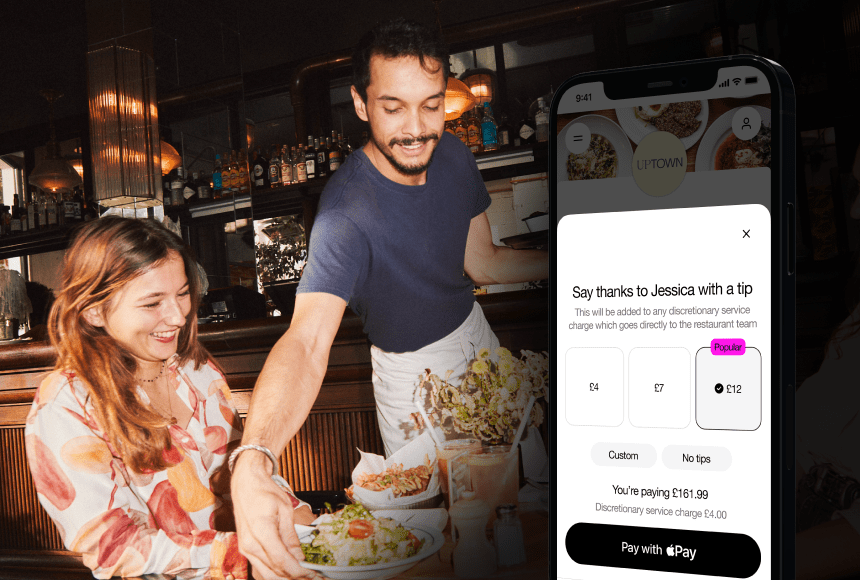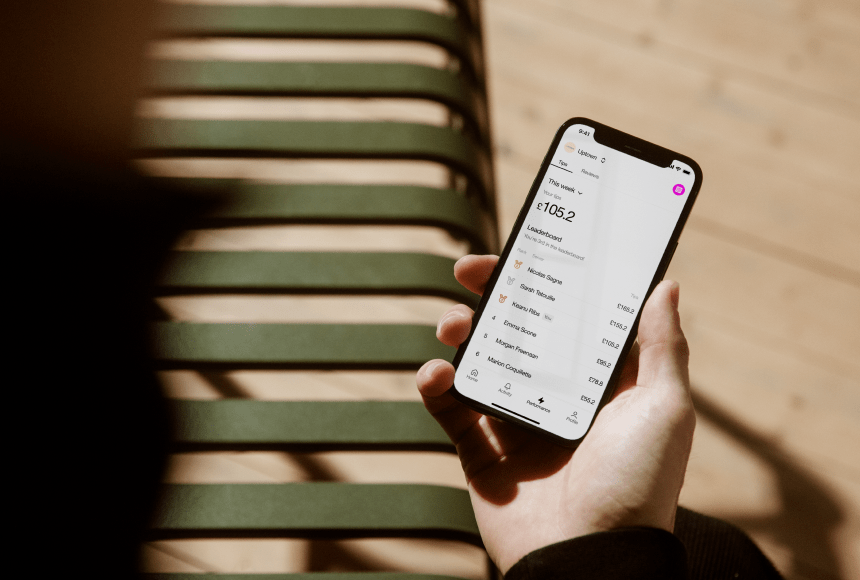
Reinventing Staff Morale: How Modern Tipping Methods Empower Your Restaurant Teams
Why Digital Tipping Deserves Your Attention
Tipping has long been a vital source of income for restaurant employees. Traditionally, a bit of loose change or a quick scribble on the bill signalled a diner’s gratitude. But in today’s tech-driven world, those gestures are rapidly changing form. Contactless payments, digital menus, and QR code scanning for bills mean that how guests leave a tip is also evolving. And this shift isn’t merely about convenience. For many establishments, digital tipping opens doors to higher tips, improved transparency, and ultimately a happier, more motivated team.
Recent data from The Caterer suggests that digital and mobile payment platforms are becoming increasingly popular among UK diners. As these methods gain traction, they offer restaurant owners like you a chance to rethink tipping structures—and even develop new ways to energise and reward staff. Below, we’ll see why digital tips matter, how they affect your team’s motivation, and which practical steps you can take to harness them fully.
1. A Smooth and Transparent Payment Experience
When tipping becomes digital, it’s often faster and clearer for both customers and employees. No more fumbling for coins, no more guesswork as customers attempt to do mental math in front of the card machine. Many modern systems (like sunday) embed tipping prompts within the payment flow, ensuring it feels natural and unpressured for diners—and neatly recorded for staff.
- Instant feedback: Staff can sometimes see tips in real time through integrated platforms, offering a quick morale boost or a helpful measure of the current service. Quick knowledge of tip levels can spur the team to keep standards high throughout the shift.
- Eliminating confusion: Digital tips appear clearly on receipts and dashboards. Everyone knows who gets what portion, especially if you run a tip pool. This clarity prevents the messy friction that sometimes arises when splitting cash at the end of a busy night.
- Reduced friction at checkout: The simpler it is to pay, the more likely diners are to add a small (or bigger) extra. An awkward, time-consuming card machine process can dampen the end-of-meal experience—and, consequently, the tip.
By smoothing out payment interactions, digital tipping reduces frustration on both sides. Staff don’t need to chase for that final step, and diners feel less self-conscious about deciding how much to leave. The result? More consistent tips that can elevate the general mood and loyalty of your workforce.
2. Motivating Through Recognised Effort
Nothing pleases a dedicated chef or server more than tangible gratitude from satisfied guests. Digital tipping, precisely recorded, makes it simpler to see exactly how well your staff’s hard work is resonating. Instead of piling notes in a jar or having uncertain shares, each employee can see the fruits of their efforts—and adjust accordingly if they want to pursue higher service standards.
- Personal tipping data: Some platforms allow staff to log in and view their daily or weekly tip totals. It’s a direct gauge of performance, letting them tie strong shifts or exceptional service to a visible reward.
- Encouraging healthy competition: If you handle tips individually, your servers can monitor personal results while still cooperating. If you prefer a shared tip pot, the group collectively reaps the rewards—fostering an “all-hands-on-deck” attitude.
- Incentivising training: Staff might feel more motivated to learn advanced upselling techniques or polish their wine pairing knowledge if they see direct correlation to higher gratuities. This translates into a better guest experience overall.
But remember: linking tips solely to an individual or daily total can stir competition that might overshadow teamwork. You’ll need to strike a balance, designing structures that reflect your restaurant’s unique culture and operational flow. For instance, a partial pooling system can keep tensions in check while still rewarding personal initiative.
3. Encouraging Teamwide Collaboration
Beyond monetary perks, digital tipping can unite your front-of-house and back-of-house staff in a shared mission: keep diners happy, and everyone benefits. Rather than having tips flow only to the person who runs the table, today’s restaurants often distribute them among the entire team—kitchen crew, bartenders, even support roles like dishwashers or runners.
- Less resentment, more camaraderie: With a fair and transparent system, your head chef and dishwasher both feel valued for the end result. The line cook who hustled to plate those last-minute requests is as integral as the server who greeted the guests with a smile.
- Fostering cross-training: Staff more willingly step outside their usual responsibilities if they know the payoff is shared. A host might help expedite plates during a rush; a server might restock the bar. Everyone invests in the common goal: top-notch service that yields better tips.
When staff see a positive correlation between good teamwork and consistent digital tips, they become a more cohesive, enthusiastic unit. A stable, supportive environment like this often means lower turnover, saving you time and cost on hiring and training new faces.
4. Building Trust with Detailed Breakdown
A perk of digital tipping is the ability to provide staff with itemised records. This fosters trust by clarifying exactly how tips are allocated—particularly if you have a combined pool or a sophisticated tipping algorithm. A transparent breakdown can help staff accept any tip distribution policy you choose, from a simple per-hour proportion to more nuanced points-based systems.
- Points or weighting system: For instance, you might assign each role a certain weighting. A server might have 2 points, while a cook or runner has 1, and a bartender 1.5. At the end of the shift, total tips get split according to these ratios. A digital approach can automatically do this math, ensuring no mistakes or suspicion.
- Insightful dashboards: Some advanced solutions show real-time or daily tip totals, along with how they’re split. This detail minimises the “where did that tip go?” confusion. Staff can see their share and trust they weren’t short-changed by manual counting errors.
- Increased loyalty: Team members who feel confident about tip allocation often become ambassadors for your restaurant, telling friends or prospective hires that you run a fair, modern place to work. This can lead to a stronger applicant pool and better staff longevity.
A foundation of trust typically produces an upbeat energy in daily service. Staff who aren’t worried about tip fairness can focus on delighting guests, knowing the system has their back financially.
5. Enabling Contactless and Convenient Tipping for Guests
While the internal mechanics of tip distribution matter, you also want to ensure you actually receive as many tips as possible. This is where user-friendly digital tipping steps in. If you’re using a frictionless payment platform—like scanning a QR code from the table with sunday—then the tip suggestion stage is integrated into the payment process. This subtle nudge can give a healthy lift to total gratuities.
- Default tip percentages: A small prompt with recommended levels (10%, 12.5%, 15%) can jog diners’ memory to leave something. They remain free to choose “other” or no tip, but the suggestion alone normalises the gesture.
- Mobile convenience: If paying and tipping only takes a few taps on a smartphone, diners are less likely to skip it. By contrast, multiple awkward steps or needing to flag down a card machine might deflate motivation.
- Immediate gratification for staff: Once completed, that tip is digitally recorded. In some setups, staff see it on their device or a storewide dashboard, reinforcing the positivity on the spot.
This approach helps guests feel relaxed and in control. Not only do staff receive tips more reliably, but owners can also gather valuable data on tip percentages across time slots or table sizes—insights that might help shape shift scheduling or promotional offers.
6. Handling Common Pitfalls in Digital Tipping
Despite the advantages, digital tipping isn’t without challenges. Some staff might worry that guests will tip less if they’re confronted with an app rather than a warm face. Others fear technical glitches or hidden charges. Here’s how to navigate these issues:
- Train staff on technology: Show them how to explain the process if a guest is uncertain. If staff can confidently answer “How do I leave a tip?” diners feel more comfortable—and more inclined to tap that extra 10–15%.
- Maintain a personal touch: The human element still matters. Digital solutions shouldn’t replace heartfelt service or friendly farewells. Instead, they merely handle the end transaction with less friction. Reassure staff that their personality remains crucial.
- Watch out for confusion with service charges: Some restaurants add an automatic service charge, which might make customers assume a tip is already included. If that’s the case, make sure the digital payment screen clarifies whether tips are separate or optional, avoiding negative surprises.
By addressing these details head-on, you can exploit the strengths of digital tipping—speed, accuracy, convenience—without falling victim to misunderstandings.
7. Sustaining Motivation Through Communication and Feedback
Digital tipping shouldn’t be a static system that staff just accept. Encourage ongoing input and iteration. Maybe you discover that Saturday brunch yields fewer gratuities, prompting you to try more direct tip prompts or highlight outstanding staff achievements. Weekly or monthly staff discussions about tips, plus any relevant stats, can spark new ideas for improvement.
- Team check-ins: A short meeting where you share last month’s average tip percentages might spur a friendly competition or highlight which shifts need more attention. Staff can brainstorm how to raise tips—like inviting guests to try a recommended cocktail or dessert.
- Individual recognition: If a certain server consistently gets high tips, celebrate them. Even in a pooled environment, acknowledging great performance fosters pride and encourages colleagues to learn from them.
- Guest feedback loop: Some digital platforms let you embed quick feedback or ratings after payment. Over time, this can help you tie tip amounts to specific facets of service—like speed, product knowledge, or ambience—offering further guidance for staff training.
Think of tips as more than just additional income. They can be a vital metric that, if monitored and discussed, shapes how your entire team approaches guest satisfaction.
Why Digital Tips Provide a Bigger Picture of Success
As restaurant technology gallops forward, digitised tips aren’t just a nice add-on—they’re a powerful lever for employee motivation and a reflection of guest satisfaction. By employing a transparent, fair distribution system and making it extremely easy for customers to tip, you create an environment where staff feel valued for their hustle. When morale is high, service often shines, forging a cycle of positive feedback that leads to more return visits—and more tips.
From ensuring staff can see how their efforts translate into daily gratuities, to distributing the funds with minimal fuss, digital approaches can dispel age-old annoyances like stolen tip jars or uncertain cash splits. You can also fold in personal touches: servers remain crucial to building rapport, and the technology hums in the background to handle the transaction efficiently. The end result is an uplifting synergy—happy staff, satisfied diners, and a more consistent revenue stream for everyone. It’s a path that not only future-proofs your restaurant but also ensures the warm glow of great hospitality never fades away.
Find out more today
Drop us your details below and we’ll reach out within the next 24
More tips means a better service.
3X more tips mean 3X better guest-experience, and 3X better staff-retention.


